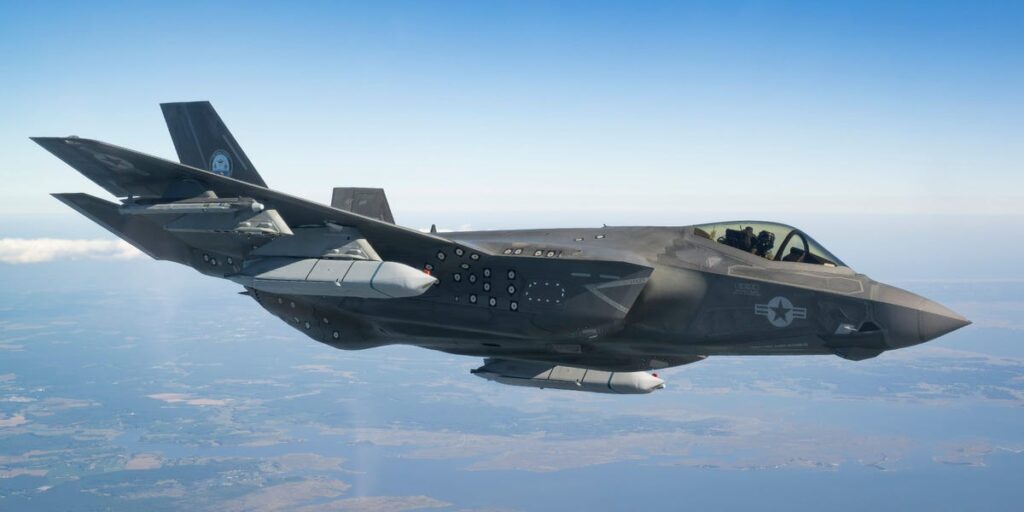The US military has published photos for the first time that show a fifth-generation F-35 fighter armed with a stealthy long-range anti-ship missile.
The photo, released on Monday, shows an F-35C Lightning II carrying two AGM-158C Long-Range Anti-Ship Missiles (LRASMs) during a flight test conducted earlier this month. The aircraft took off from Naval Air Station Patuxent River in Maryland.
Efforts to integrate the missile with the carrier-based variant of the advanced F-35 stealth fighter underscore the military’s push to expand its anti-ship capabilities across new platforms. The military has acknowledged an increasing need for these capabilities, particularly as rivals like China strengthen their navies.
The F-35 doesn’t have a dedicated anti-ship missile, making the LRASM a valuable addition. The AGM-158C LRASM is a stealthy precision-guided, air-launched cruise missile that has been in service since 2018. It was developed to give the US Air Force and US Navy more strike options in the maritime domain.
LRASM is the anti-ship variant of the AGM-158 Joint Air-to-Surface Standoff Missile (JASSM) and can already be launched from Air Force B1 bombers and Navy F/A-18 Super Hornets, among some other aircraft. The goal now appears to be readying the weapon for the F-35, an increasingly prominent fifth-gen fighter.
“As part of ongoing integration efforts, the Pax River F-35 Integrated Test Force (Pax ITF) team flew two days of test flights to evaluate flutter, loads, and flying qualities with two AGM-158 loaded on external stations,” the US military wrote in the caption for its photos on Monday.
The military explained that the Pax ITF mission is to carry out flight tests for the F-35B/C and provide data to support program verification and operational requirements.
According to a fact sheet from Lockheed Martin, the manufacturer of the LRASM, the missile has a semi-autonomous guidance system and a range of some 200 nautical miles. It can deliver a 1,000-pound warhead at subsonic speeds.
Because of its size, the F-35 cannot carry the LRASM internally, meaning the missile would sit on the aircraft’s exterior, compromising the aircraft’s stealth to a certain degree. However, the missile would still give the fighter a notable firepower upgrade.
“LRASM is a defined near-term solution for the Offensive Anti-Surface Warfare air-launch capability gap that will provide flexible, long-range, advanced, anti-surface capability against high-threat maritime targets,” the military said.
While the LRASM is a highly capable air-launched weapon for maritime warfare, it is costly, at over $3 million per missile, so the US has also sought out cheaper solutions, developing anti-ship capabilities like the QUICKSINK experimental weapon.
The F-35 and LRASM photos this week and other recent anti-ship weapons testing highlight the US military’s efforts to develop additional strike options in the maritime space as it increasingly focuses on China as its “pacing challenge.”
Anti-ship capabilities would likely play a crucial role if Washington and Beijing were to clash. Stand-off weapons like LRASM allow American aircraft to strike enemy targets from farther out, limiting their exposure to hostile air defenses.
Read the full article here
















